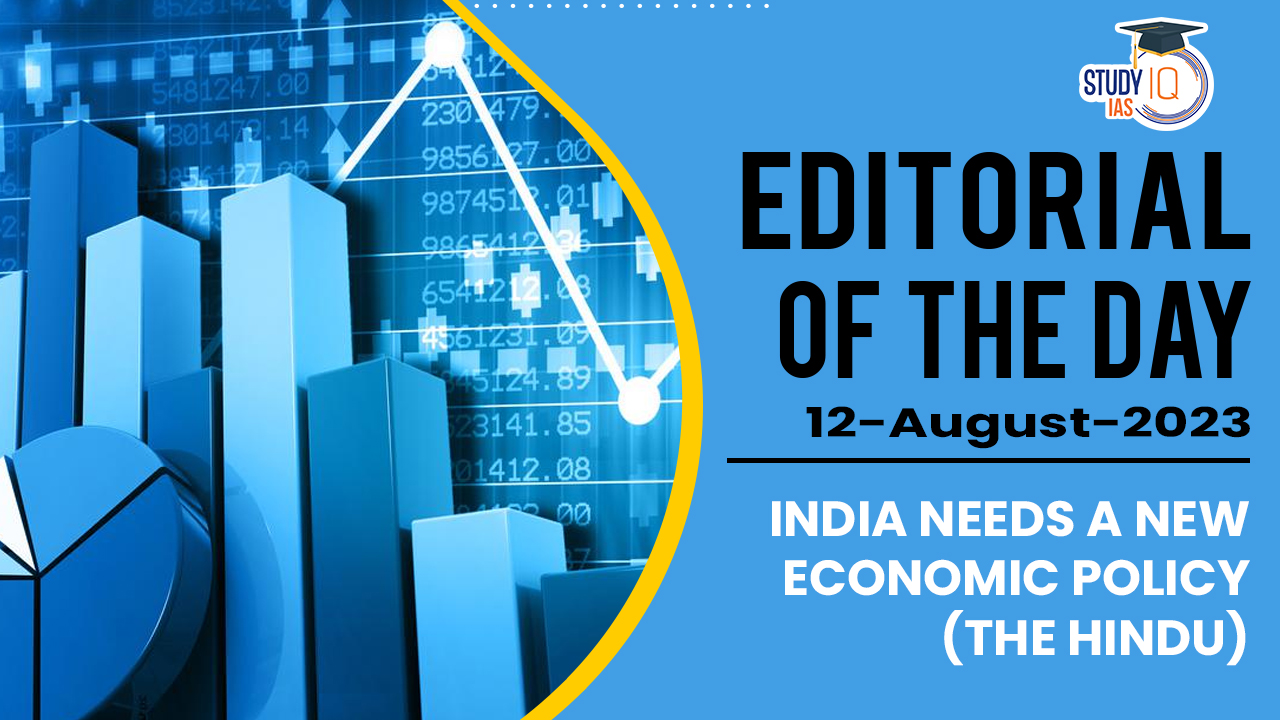Context: The article is discussing the recently released fourth-quarter GDP growth rate figures for the year 2022-23 by the National Statistical Office (NSO). The data shows that when compared to the fourth-quarter figures of the previous year, the current figures paint a less optimistic view of the economic situation. This stands in contrast to the portrayal of the economic situation presented in media publications from the Press Information Bureau, which might be presenting a more positive or upbeat perspective on the GDP growth rate. Overall, the article is highlighting a discrepancy between the way the media is presenting the economic data and the potentially less favourable data released by the National Statistical Office. It suggests that the actual economic situation might be less rosy than what is being portrayed in the media.
Decoding the Editorial
The article is discussing the growth rate of the Indian economy, focusing on data provided by the National Statistical Office (NSO) and drawing comparisons with past periods, particularly since 2014-2015.
- GDP Growth Rate Trends: The author points out that the GDP growth rate of India has been on a declining trend since the fiscal year 2015-2016. The most recent data, specifically the 2022-23 GDP fourth-quarter growth rate figures, indicate that the decline in growth rate has continued.
- Comparison with Historical Growth Rates: The author mentions that the current growth rate has fallen to a level that has been historically referred to as the “Hindu Rate of Growth,” which is around 3.5%.
- The Hindu rate of growth is a term used to describe the lower rate of economic growth observed in the Indian economy during the 1950s to 1980s and it averaged around 4%. This term was coined by an Indian economist, Raj Krishna in 1978.
- Concerns about Current Economic Policy: The author criticises the economic policies of the current government, stating that they have not effectively addressed the decline in GDP growth rates. The article suggests that there is a lack of coherent economic policy structuring during the period from 2014 to 2023.
- Overly Optimistic Predictions: The author also mentions that there have been optimistic predictions and claims by the government, including the target of achieving a $5 trillion GDP by 2024, which would require an annual growth rate of 15%. However, the author argues that these claims lack accompanying policy structures to achieve such ambitious targets.
Steps to be taken:
According to the author, the following steps should be taken to address the economic challenges and shortcomings:
- Clear Economic Objectives and Priorities: The government should clearly define economic objectives and assign priorities to them. This involves setting specific goals for economic growth, job creation, poverty reduction, and other relevant areas.
- Incentivization and Discontinuation: The government should incentivize certain economic activities that promote growth and employment. This could involve measures like abolishing personal income tax and scrapping the Goods and Services Tax (GST) to encourage investment and earnings. Additionally, the author suggests discontinuing certain policies that may not be contributing positively to the economy.
- Resource Mobilization: Resources should be mobilized through indirect taxes and liberal printing of currency notes. The funds generated could be used to finance extensive public works and create employment. The author also suggests paying higher interest rates on fixed-term savings in bank accounts to increase the purchasing power of the middle classes.
- Interest Rates and Loans: Interest rates on loans to small and medium industries should be kept low (no more than 6%) to stimulate production and employment in these sectors.
- New Economic Policy: The author calls for the formulation of a new economic policy that is based on clear objectives, priorities, strategies, and a transparent resource mobilisation plan. This policy should focus on sustainable economic growth and development.
- Market System and Regulations: The author emphasises that while deregulation is important, it should not lead to a complete rejection of government intervention. Some level of government intervention is needed for safety nets, addressing market failures, and creating a level playing field. Democratic institutions should be empowered to prevent disorder that might arise from rapid deregulation.
- Balancing Public Sector and De-regulation: The author suggests finding a balance between the public sector and deregulation. While promoting de-regulation and market-based systems, the government should also ensure affirmative action, social security, and a safety net to create opportunities for the poor and reduce inequalities.
- Corporate Governance and Accountability: Steps should be taken to ensure transparency, accountability, and good corporate governance. This helps legitimise profit-making within a competitive market system and reduces monopolistic tendencies.
- Harmonious Society and Democratic Values: The author argues that these steps contribute to the formation of a democratic and harmonious society, where economic growth is balanced with social welfare and human rights.


 TNPSC Group 4 Admit Card 2025 Out at tnp...
TNPSC Group 4 Admit Card 2025 Out at tnp...
 Species Added to India's Flora and Fauna...
Species Added to India's Flora and Fauna...
 Daily Quiz 02 July 2025
Daily Quiz 02 July 2025





















